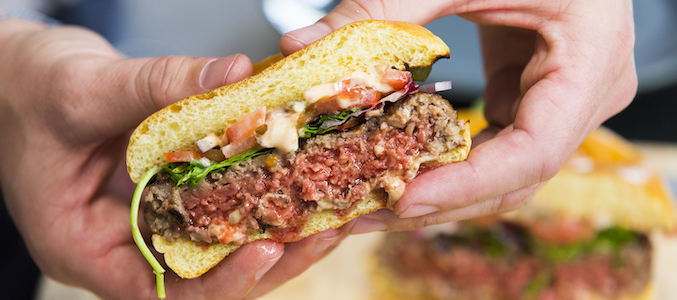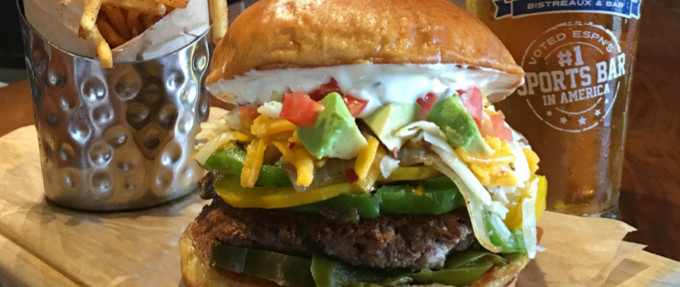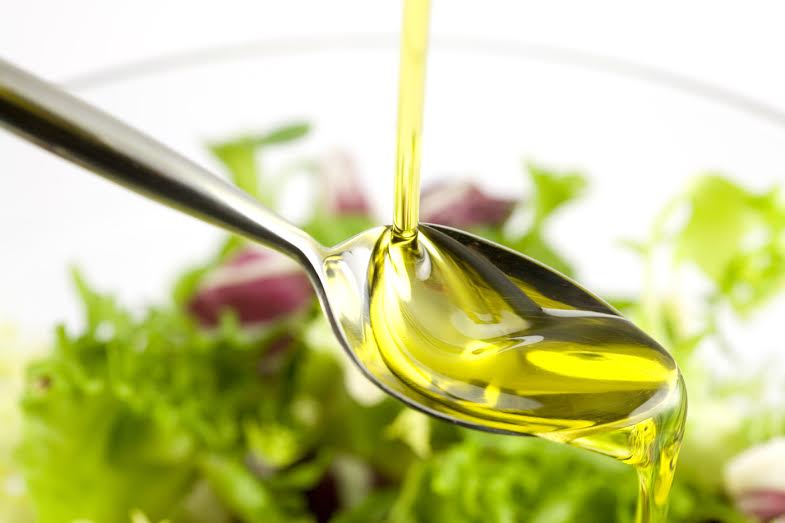- New recipe marks the food startup’s first major product upgrade since the award-winning plant-based meat debuted in 2016
- Next-generation Impossible Burger contains no gluten, 0 mg cholesterol and as much iron and protein as conventional beef from cows
- Impossible Burger “2.0” debuts today in Las Vegas at the International Consumer Electronics Show and tomorrow at America’s most influential restaurants
Impossible Foods plans to launch its flagship product in grocery stores later this year.
 Impossible Foods is launching its first major product upgrade this month— and the next-generation Impossible Burger delivers unprecedented taste, nutrition and versatility.
Impossible Foods is launching its first major product upgrade this month— and the next-generation Impossible Burger delivers unprecedented taste, nutrition and versatility.The new recipe of the plant-based Impossible Burger contains no gluten, no animal hormones and no antibiotics. It’s kosher- and halal-certified. It’s delicious in any ground meat dish, including stews, chili, sauces, braises, minces, meatballs, meat pies or any other beefy menu item. It’s easy to cook on the BBQ, charbroiler, flat top grill, high speed oven, steamer or sauté pan. Chefs can use the Impossible Burger in recipes from lasagne to lo mein.
The new Impossible Burger has as much bioavailable iron and protein as a comparable serving of ground beef from cows. In addition, the new Impossible Burger has 0 mg cholesterol, 14 grams of total fat and 240 calories in a quarter-pound patty. (A quarter-pound, conventional “80/20” patty from cows has 80 mg cholesterol, 23 grams of total fat and 290 calories.)
“The newest Impossible Burger delivers everything that matters to hard-core meat lovers, including taste, nutrition and versatility,” said Impossible Foods’ CEO and Founder Dr. Patrick O. Brown. “This is the plant-based meat that will eliminate the need for animals in the food chain and make the global food system sustainable.”
Watch the video news release about the next-generation Impossible Burger: impossiblefoods.box.com/v/presskit.
WHAT STARTS IN VEGAS GOES NATIONWIDE
Impossible Foods launched its next-generation Impossible Burger at the International Consumer Electronics Show (CES) — the first food ever showcased at the show, which features breakthrough technologies from connected homes to autonomous cars. Impossible Foods expects to serve at least 12,000 free samples throughout CES with a food truck outside the Las Vegas Convention Center Jan. 8-11.
On Jan. 7, the Las Vegas outlet of Border Grill became the world’s first restaurant to begin serving the next-generation Impossible Burger. Owned by Mary Sue Milliken and Susan Feniger, Border Grill revolutionized Mexican cuisine in America and helped kickstart the sustainable food movement among US restaurateurs.
“Using animals to make protein is an ancient technology — and while it worked in the 19th century, it doesn’t sustainably scale for the 21st century and beyond,” said Milliken, the 2018 winner of the Julia Child Award for lifetime achievement. “We need more innovation in the food sector so meat lovers can keep eating their favorite foods — without destroying biodiversity. I’ve been watching Impossible Foods for years and am thrilled to see the quantum leap forward of this next-generation recipe.”
Starting Jan. 8, many more of America’s most influential chefs will get exclusive access and serve the new recipe in their restaurants, including:
- Chef Brad Farmerie’s Saxon + Parole (New York City)
- Chef Danny Bowien’s Mission Chinese Food (New York City)
- Chef David Burke’s Woodpecker and David Burke Tavern (New York City)
- Chef Tae Strain’s Momofuku CCDC (Washington, DC)
- Chef Tal Ronnen’s Crossroads Kitchen (Los Angeles)
- Chef Traci Des Jardins’ Jardinière and School Night (San Francisco)
- Chef Chris Cosentino’s Cockscomb (San Francisco), Acacia House (St. Helena, Calif.) and Jackrabbit (Portland, Ore.)
- Chef Michael Symon’s B Spot burger restaurants and Bar Symon (Ohio)
- Chef Sarah Schafer’s Irving Street Kitchen (Portland, Ore.)
- Chef Justin Cucci and Jeremy Kittelson’s Linger (Denver)
- Chef Tony Priolo’s Maillard Tavern (Chicago)
- Chefs Ken Oringer and Jamie Bissonnette’s Little Donkey (Boston)
- Chef Devin Hashimoto’s Andrea’s at Wynn and Wynn Las Vegas’ Charlie’s Bar + Grill and Terrace Pointe Café (Las Vegas)
- Entrepreneur Kyle Brechtel’s Copper Vine (New Orleans)
- Chef Geordie Brower’s Cafe Palace, Dickie Brennan’s Restaurant Group (New Orleans)
- Chefs Jennifer Carroll and Billy Riddle’s Spice Finch (Philadelphia)
- Chef Pete Blohme’s Sunset Pointe and Panini Pete (Fairhope, Alabama)
The Impossible Burger is now available in more than 5,000 locations in the United States, from fine-dining establishments and “better burger” chains (including Umami Burger, Bareburger, Wahlburgers, The Counter, Hopdoddy, Fatburger and Gott’s), as well as White Castle, America’s original fast food restaurant and home to the Impossible Slider, celebrated as one of America’s best burgers.
Starting next week, “better burger” chains will begin rolling out the new recipe. Starting Feb. 4, the next-generation Impossible Burger will be available to all restaurants in the United States through major food distributors. At that point, restaurants will automatically get the new recipe when they place their next order; by mid-March nearly all Impossible Foods’ restaurant customers will likely be serving the new recipe.
The Impossible Burger is also available in more than 100 restaurants in Hong Kong and Macau. The company plans to launch the new recipe in Singapore later this year, with additional markets to come.
BIG TASTE, SMALL FOOTPRINT
Based in Redwood City, Calif., Impossible Foods uses modern science and technology to create wholesome and nutritious food, restore natural ecosystems and feed a growing population sustainably. The company makes meat directly from plants — with a much smaller environmental footprint than meat
from animals.
To satisfy the global demand for meat at a fraction of the environmental impact, Impossible Foods developed a far more sustainable, scalable and affordable way to make meat, without the catastrophic environmental impact of livestock.
Shortly after its founding in 2011, Impossible Foods’ scientists discovered that one molecule — “heme”— is uniquely responsible for the explosion of flavors that result when meat is cooked. Impossible Foods’ scientists genetically engineer and ferment yeast to produce a heme protein naturally found in plants, called soy leghemoglobin.
The heme in the Impossible Burger is identical to the essential heme humans have been consuming for hundreds of thousands of years in meat — and while the Impossible Burger delivers all the craveable depth of beef, it uses far fewer resources because it’s made from plants, not animals.
TASTE-TESTED BY HARD-CORE MEAT LOVERS
This week’s launch marks the first major product upgrade from Impossible Foods and comes after years of research — including frequent, third-party taste tests on the West Coast, Midwest and Mid-Atlantic with consumers who self-identify as heavy meat eaters.
The participants each eat a “naked” Impossible Burger (without condiments or buns). The tasters aren’t told whether they’re eating plant- or animal-based meat. They then rate the naked patty purely on “likeability.” In separate tests, consumers gauge likeability for a similarly plain patty from a cow (made with conventional “80/20” ground beef from a major grocery chain). Based on aggregated data from more than 1,500 consumers in these sensory tests, the all-new Impossible Burger’s “likeability” rivals that of conventional burgers from cows.
“In addition to taste tests with consumers conducted by independent researchers, Impossible Foods’ own flavor scientists and sensory experts conduct at least 100 internal taste tests per week,” said Impossible Foods’ Chief Science Officer Dr. David Lipman. “We are relentless in our quest to consistently improve the Impossible Burger. The cow can’t compete.”
Read more details of Impossible Foods’ testing and methodology in Dr. Lipman’s blog post:
NEW RECIPE COMING SOON TO GROCERY STORES
Later this year, Impossible Foods plans to launch the next-generation Impossible Burger in select US grocery stores. That means that home chefs will be able to enjoy the Impossible Burger’s industry- leading taste and functionality.
The original Impossible Burger was custom-designed for flat-top cooking at restaurants. By contrast, the new recipe works in every ground meat dish, from dumplings to sloppy joes. It can be steamed, seared or sizzled on slats over an open flame. It retains its texture and juiciness throughout the cooking process.
The new recipe gets its meaty chew and versatile texture from soy protein, not wheat protein—a response to consumers who loved the original Impossible Burger but wanted no wheat or gluten. Impossible Foods makes the new product in its manufacturing facility in Oakland, Calif.
“Impossible Burger fans told us loud and clear they wanted a gluten-free burger that was at least as nutritious as meat from animals,” said Impossible Foods’ Chief Operations Officer and Chief Financial Officer David Lee, who also leads global sales. “Our new product delivers all the taste meat lovers crave– without compromise to nutrition or the planet.”
Read more details about soy in this blog post from Dr. Sue Klapholz, Impossible Foods’ Vice President of Nutrition and Health: impossiblefoods.com/latest.
ABOUT IMPOSSIBLE FOODS
Based in California’s Silicon Valley, Impossible Foods makes delicious, nutritious meat and dairy products directly from plants — with a much smaller environmental footprint than meat from animals. The privately held company was founded in 2011 by Patrick O. Brown, M.D., Ph.D., Professor Emeritus of Biochemistry at Stanford University and a former Howard Hughes Medical Institute investigator. Investors include Khosla Ventures, Bill Gates, Google Ventures, Horizons Ventures, UBS, Viking Global Investors, Temasek, Sailing Capital, and Open Philanthropy Project.








